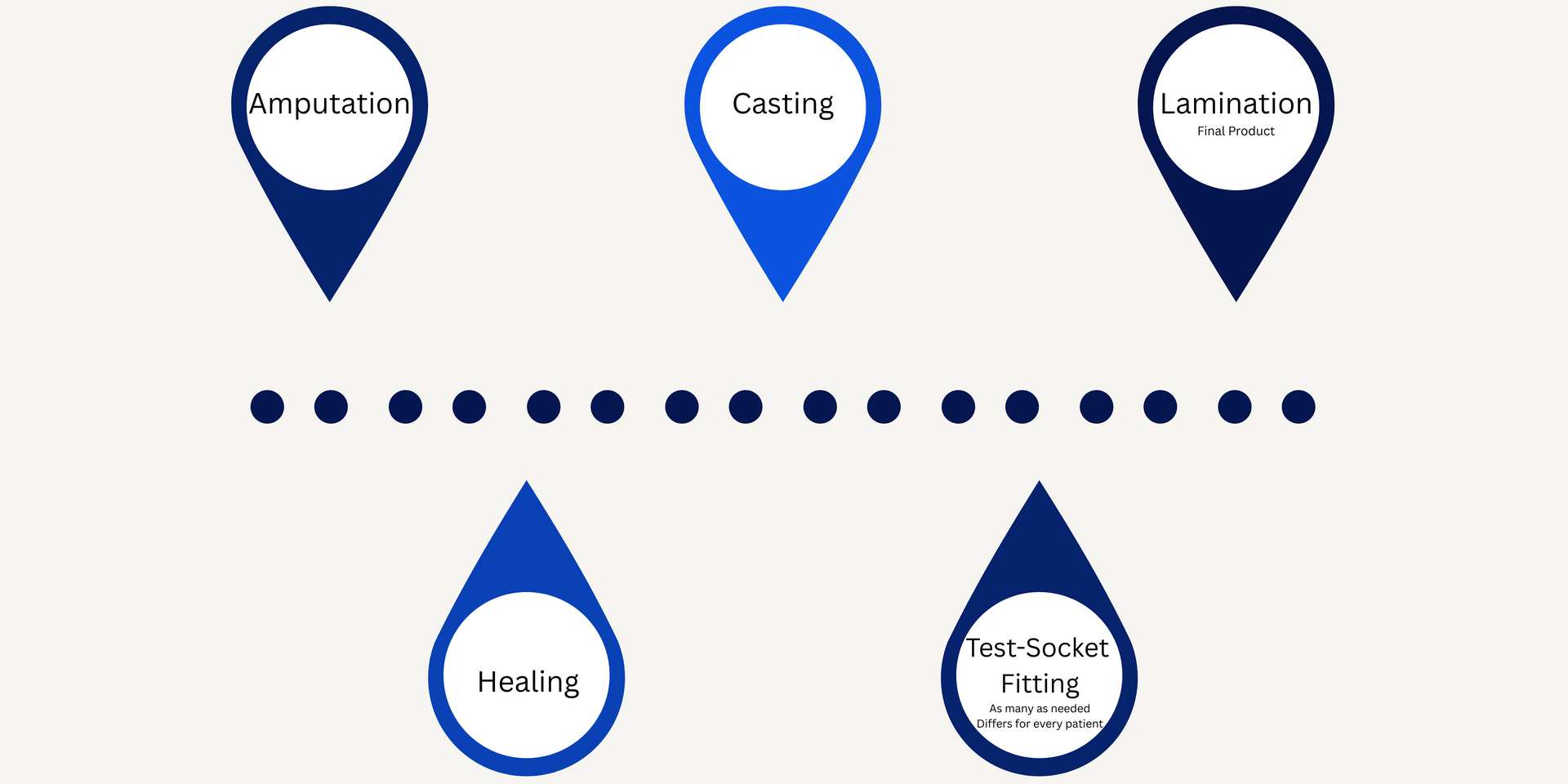Your Journey with Prosthetics Starts Here:Everything You Need to Know
Understanding Prosthetics
What are they & how do they work?
Prosthetics are custom-made devices designed to replace missing limbs and restore mobility, function, and independence. Modern prosthetics can range from basic cosmetic limbs to highly advanced devices that incorporate robotics, microprocessors, and specialized materials. Each prosthesis is tailored to the individual's needs, activity level, and lifestyle. The goal is not only to replace what was lost but to help the user regain confidence, freedom of movement, and quality of life.
Amputation to Prosthetic
The process of getting a prosthetic limb involves several important steps. It begins with post-amputation healing, where the focus is on wound care and shaping the residual limb for prosthetic fitting. Next, a prosthetist works closely with the patient to design and create a custom socket that fits comfortably and securely. Multiple fittings and adjustments are common to ensure the best fit and function. Once the final prosthetic limb is delivered, users undergo gait training and rehabilitation to learn how to use their new limb safely and confidently.

Care & Maintenance
Prosthetic limbs require regular care to ensure they function properly and last as long as possible. Users should clean the socket daily with mild soap and water to prevent skin irritation and infections. It's also important to inspect the prosthesis for signs of wear, damage, or loose components. Regular check-ups with the prosthetist are recommended to make adjustments or replace parts as needed. A well-maintained prosthesis not only performs better but also keeps the user safe and comfortable.
Post-Amputation Care
The period after amputation is crucial for both physical healing and emotional adjustment. Proper wound care, pain management, and maintaining the health of the residual limb are essential. Patients also need to be mindful of skin hygiene and limb shaping techniques such as compression wrapping or shrinkers. Emotional support, peer groups, and counseling can help individuals cope with the psychological impact of limb loss, ensuring they feel prepared and empowered for the next steps toward prosthetic use.
Emerging Technologies
Advancements in prosthetic technology are rapidly changing what’s possible for individuals with limb loss. From bionic limbs that respond to muscle signals to 3D-printed prosthetics that offer faster and more affordable options, the future is promising. Developments in smart materials, sensors, and even mind-controlled prosthetics are opening doors to enhanced mobility, comfort, and function. Staying informed about these innovations allows users to explore new options as they become available.
We Visit Hospitals
and Senior Living Homes!
Call: (810) 220-3472

Share On: